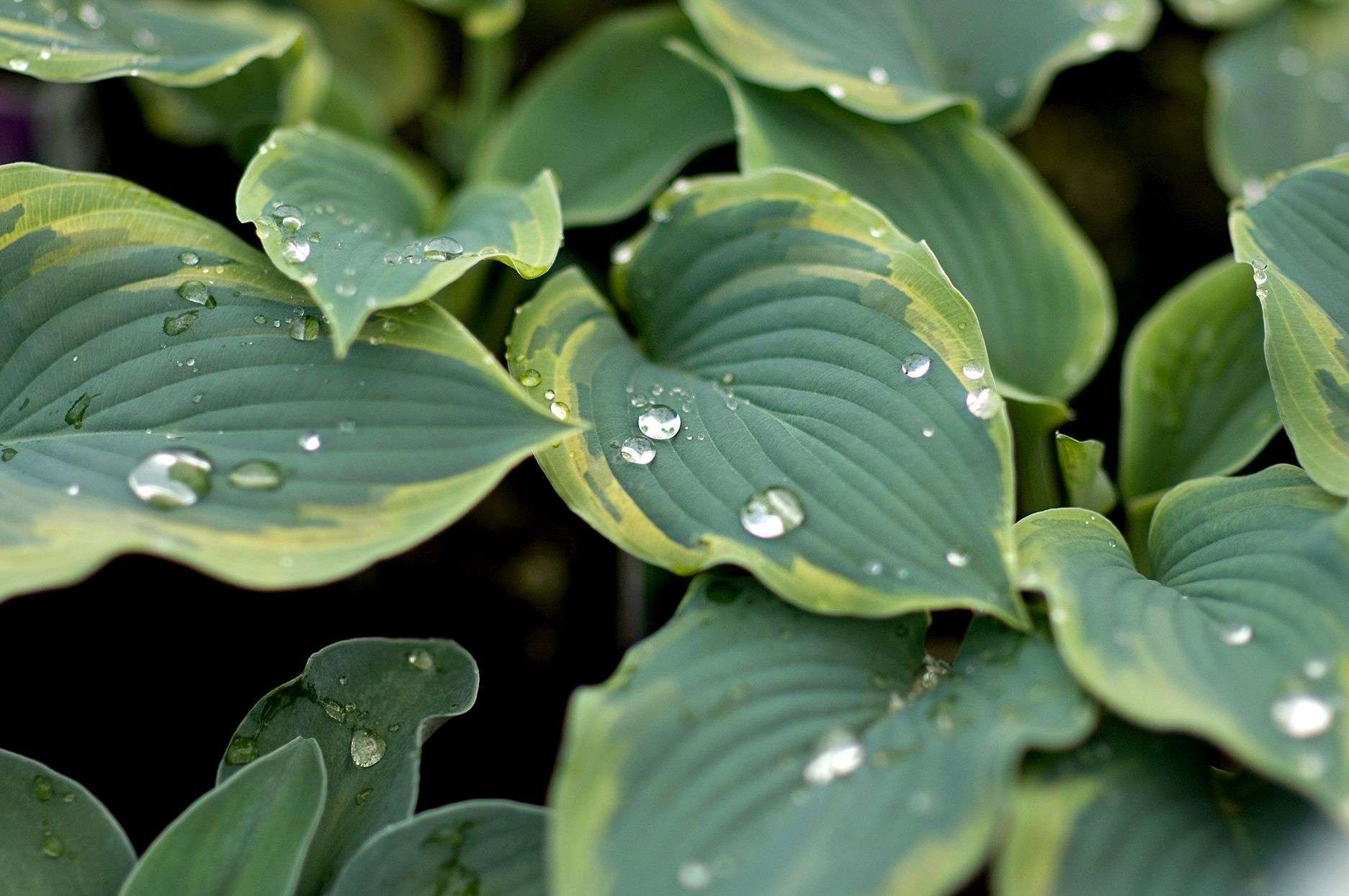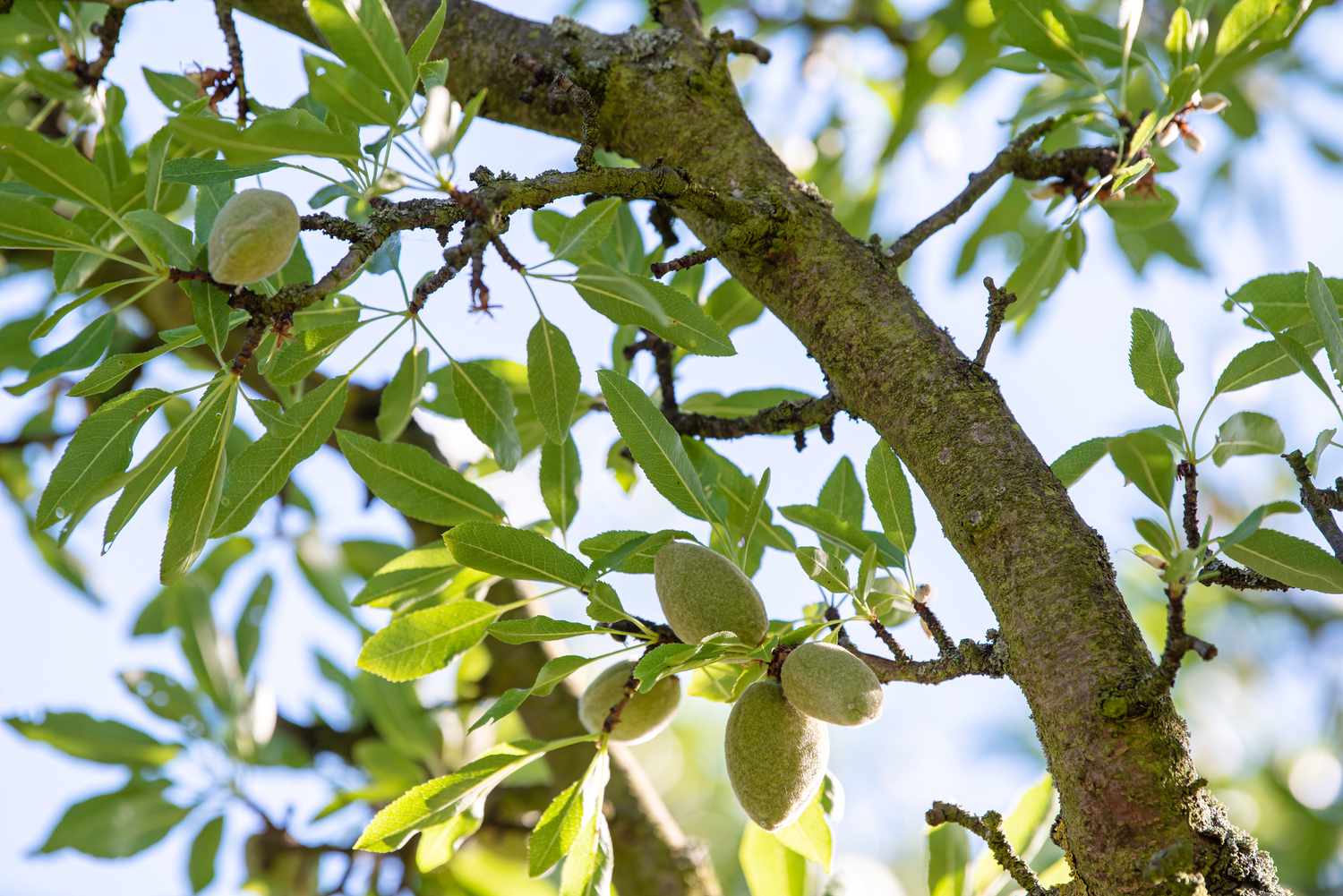Our Guide to Hosta Care for Exceptional Plants: Expert Tips

Hostas thrive in shady areas with well-drained soil. Water regularly and protect from slugs for optimal growth.
Hostas, known for their lush foliage, are popular among gardeners for their low-maintenance nature. These hardy perennials come in various sizes and colors, adding visual interest to any garden. Proper care ensures vibrant plants that can enhance your landscape for years.
Plant them in shady spots, water consistently, and keep an eye out for pests like slugs. With the right conditions, hostas can flourish and become a standout feature in your garden. This guide will provide essential tips to help you maintain healthy, beautiful hostas. Follow our advice to enjoy exceptional hosta plants that thrive in your garden.

Introduction To Hostas
Hostas are beloved by gardeners for their lush foliage. They thrive in shady areas and add beauty to any garden. Hostas come in many shapes, sizes, and colors. Let’s dive into their fascinating world.
History And Origins
Hostas originated in Asia, especially in Japan, China, and Korea. They were first discovered by European botanists in the 18th century. The plants gained popularity quickly due to their hardiness and beauty. By the 19th century, Hostas became a staple in European and American gardens.
Popular Varieties
There are many Hosta varieties to choose from. Each has unique characteristics. Here are some popular ones:
- Hosta ‘Sum and Substance’: Known for its large, chartreuse leaves.
- Hosta ‘Patriot’: Features striking green leaves with white edges.
- Hosta ‘Blue Mouse Ears’: Small size with blue-green leaves.
- Hosta ‘Frances Williams’: Large, blue-green leaves with golden edges.
Hostas offer a variety of options for gardeners. They can suit any garden style. Whether you want large, bold leaves or small, delicate ones, there’s a Hosta for you.
| Variety | Leaf Color | Size |
|---|---|---|
| Sum and Substance | Chartreuse | Large |
| Patriot | Green with White Edges | Medium |
| Blue Mouse Ears | Blue-Green | Small |
| Frances Williams | Blue-Green with Golden Edges | Large |
Choosing The Right Location
Hostas thrive in specific conditions. Choosing the right location is key. This ensures your plants grow healthy and vibrant. Let’s explore the best settings for your hostas.
Ideal Sunlight Conditions
Hostas prefer partial to full shade. They can tolerate some morning sun. Avoid placing them in harsh afternoon sun. This can scorch their leaves.
Here’s a quick guide:
- Morning sun: Good
- Afternoon sun: Bad
- Full shade: Acceptable
Check your garden for shady spots. These are perfect for hostas.
Soil Requirements
Hostas thrive in well-draining soil. They prefer soil that is rich in organic matter. Avoid heavy clay soils.
Here’s how to prepare the soil:
- Mix compost into the top 6 inches of soil.
- Ensure the soil pH is between 6.0 and 7.5.
- Check for good drainage by digging a small hole and filling it with water. It should drain within an hour.
Consider using raised beds. This improves drainage and soil quality.
| Soil Type | Suitability |
|---|---|
| Loamy | Excellent |
| Sandy | Good, with compost |
| Clay | Poor |
Remember, healthy soil leads to healthy hostas. Focus on improving your garden soil.
Planting Hostas
Hostas are popular for their lush foliage and easy care. Planting hostas correctly ensures they thrive and become a garden highlight.
Best Planting Time
Spring or early fall is the best time to plant hostas. This timing allows the plants to establish roots before extreme temperatures.
Step-by-step Planting Guide
Follow this simple guide for planting hostas:
- Choose a Location: Select a spot with partial shade. Hostas prefer dappled sunlight.
- Prepare the Soil: Ensure the soil is well-draining. Add compost or organic matter to enrich it.
- Dig a Hole: Make a hole twice the width of the root ball. The depth should match the root ball’s height.
- Place the Hosta: Position the plant in the hole. Ensure the crown is level with the soil surface.
- Fill the Hole: Backfill the hole with soil. Press gently to eliminate air pockets.
- Water Thoroughly: Water the newly planted hosta well. Keep the soil moist for the first few weeks.
| Step | Description |
|---|---|
| 1 | Choose a shaded location |
| 2 | Prepare well-draining soil |
| 3 | Dig a wide, shallow hole |
| 4 | Place the hosta with crown level |
| 5 | Fill the hole and press soil |
| 6 | Water thoroughly |
By following these steps, you ensure healthy and vibrant hostas in your garden.

Watering And Feeding
Proper watering and feeding are crucial for healthy hosta plants. This guide will help you understand the best practices to keep your hostas thriving.
Optimal Watering Schedule
Hostas need consistent moisture. They thrive in well-drained soil. Water your hostas deeply once a week. If it’s hot, water more often. Avoid watering the leaves to prevent fungus. Use a soaker hose for best results.
| Weather Condition | Watering Frequency |
|---|---|
| Normal | Once a week |
| Hot/Dry | Twice a week |
| Rainy | As needed |
Nutrient Needs
Hostas benefit from regular feeding. Use a balanced fertilizer to provide nutrients. Feed your hostas in early spring. Repeat every 4-6 weeks during the growing season. Organic compost is also a great option. Here is a simple feeding schedule:
- Early Spring: Apply balanced fertilizer
- Mid-Spring: Apply organic compost
- Summer: Repeat balanced fertilizer every 4-6 weeks
Proper watering and feeding will result in lush, healthy hostas. Follow these tips and your plants will thrive.
Pest And Disease Management
Keeping your hostas healthy requires understanding pest and disease management. Proper care ensures your plants thrive and look their best. Follow our guide to protect your hostas from common threats.
Common Pests
Hostas attract several pests that can damage their leaves and roots. Common pests include:
- Slugs and Snails: These pests chew holes in leaves, causing significant damage.
- Aphids: These small insects suck sap from leaves, leading to yellowing and curling.
- Vine Weevils: These beetles feed on roots and can cause plants to wilt.
- Nematodes: These microscopic worms infect roots and hinder plant growth.
Preventive Measures
Preventing pests involves a few simple steps. Here are some effective measures:
- Keep the garden clean: Remove debris and dead leaves to reduce hiding spots for pests.
- Water in the morning: Watering early allows foliage to dry, reducing slug and snail activity.
- Use barriers: Copper tape or diatomaceous earth can deter slugs and snails.
- Introduce natural predators: Encourage birds and beneficial insects to control pest populations.
For a quick reference, here is a table summarizing common pests and preventive measures:
| Pest | Preventive Measures |
|---|---|
| Slugs and Snails | Use barriers, water in the morning |
| Aphids | Introduce natural predators |
| Vine Weevils | Keep the garden clean |
| Nematodes | Maintain healthy soil |
By following these steps, your hostas will remain vibrant and pest-free.
Seasonal Care
Hosta plants are known for their lush foliage and easy maintenance. To keep your hostas thriving, it’s essential to understand seasonal care. Below, we’ll guide you through the necessary steps to ensure your hostas remain healthy and vibrant throughout the year.
Spring Maintenance
Spring is the perfect time to give your hostas a fresh start. Follow these steps:
- Remove dead leaves and debris from the plant’s base.
- Apply a balanced fertilizer to promote growth.
- Water regularly to keep the soil moist but not soggy.
Consider adding a layer of mulch around the base. This helps retain moisture and suppresses weeds.
Inspect the plants for any signs of pests. Early detection can prevent significant damage.
Winter Protection
Winter can be harsh on hostas. Proper protection is crucial for their survival:
- Cut back the foliage after the first frost.
- Apply a thick layer of mulch to insulate the roots.
- Ensure proper drainage to prevent root rot.
Avoid excessive watering during winter. Dormant plants need less water.
Consider using a protective cover during severe weather. This can shield the plants from extreme cold.
| Task | Spring | Winter |
|---|---|---|
| Remove Dead Leaves | ✔️ | ❌ |
| Fertilize | ✔️ | ❌ |
| Water Regularly | ✔️ | Limited |
| Apply Mulch | ✔️ | ✔️ |
| Inspect for Pests | ✔️ | ❌ |
Dividing And Transplanting
Dividing and transplanting your hostas can keep them healthy and beautiful. This process encourages new growth and prevents overcrowding. Follow our guide to ensure your hostas thrive after dividing and transplanting.
When To Divide
Knowing the right time to divide your hostas is crucial. The best time is in the early spring or fall. This allows the plants to recover quickly.
Here are some signs that indicate your hostas need dividing:
- Reduced flower production
- Smaller leaves than usual
- The center of the plant looks empty
Divide your hostas every 3 to 5 years. This keeps the plants strong and vibrant.
Transplanting Tips
Follow these steps for successful transplanting:
- Prepare the new location: Choose a spot with partial shade.
- Dig a hole: Make it twice as wide as the root ball.
- Enrich the soil: Add compost to the hole.
- Place the plant: Set the hosta in the hole at the same depth.
- Fill and water: Fill the hole with soil and water thoroughly.
Water the transplanted hostas regularly. Keep the soil moist but not soggy. Mulch around the plants to retain moisture and reduce weeds.
| Task | Description |
|---|---|
| Prepare the new location | Choose a spot with partial shade. |
| Dig a hole | Make it twice as wide as the root ball. |
| Enrich the soil | Add compost to the hole. |
| Place the plant | Set the hosta at the same depth. |
| Fill and water | Fill with soil and water thoroughly. |
Following these tips will help your hostas thrive. Keep them healthy and enjoy their beauty for years to come.
:strip_icc()/hosta-chartreuse-wiggles-37e8faf7-f1df3af0d21143a990bcd89897045fd2.jpg)
Enhancing Aesthetic Appeal
Hostas are beloved for their lush foliage and easy care. They can truly transform your garden. But to make them stand out, you need to enhance their aesthetic appeal. This means choosing the right companion plants and smart design ideas. Let’s dive into these exciting aspects.
Companion Plants
Pairing hostas with the right companions elevates their beauty. Some plants complement hostas perfectly. Here are some top picks:
- Ferns: Their delicate fronds contrast beautifully with hosta leaves.
- Astilbes: Their feathery plumes add height and color.
- Heucheras: These bring vibrant foliage colors.
- Brunnera: Their heart-shaped leaves and blue flowers are stunning.
These plants thrive in similar conditions. They like shade and moist soil.
| Companion Plant | Ideal Conditions |
|---|---|
| Ferns | Shade, Moist Soil |
| Astilbes | Partial Shade, Moist Soil |
| Heucheras | Partial Shade, Well-Drained Soil |
| Brunnera | Shade, Moist Soil |
Design Ideas
Designing with hostas can be fun. Here are some simple ideas:
- Border Edging: Use hostas to line garden paths.
- Mixed Beds: Combine hostas with other shade-loving plants.
- Container Gardens: Hostas do well in pots too.
- Water Features: Plant hostas around ponds or fountains.
These ideas make your garden look lush and organized. Hostas add texture and volume to your garden.
Troubleshooting Common Issues
Taking care of hostas can be rewarding, but sometimes, issues arise. This section focuses on troubleshooting common issues to keep your hosta plants healthy and vibrant.
Yellowing Leaves
Yellowing leaves on your hosta plants can signal various problems. Here’s how to identify and address them:
- Overwatering: Too much water can cause root rot. Ensure soil drains well.
- Underwatering: Dry soil can lead to yellow leaves. Water your hostas regularly.
- Pests: Check for slugs and insects. Use natural pest control methods.
- Nutrient Deficiency: Yellow leaves may indicate a lack of nutrients. Use a balanced fertilizer.
Stunted Growth
Stunted growth in hostas can be frustrating. Identify the cause with these tips:
- Inadequate Light: Hostas need shade to partial sun. Ensure they get the right amount.
- Poor Soil Quality: Hostas thrive in rich, well-draining soil. Improve soil with compost.
- Root Crowding: Overcrowded roots restrict growth. Divide and replant your hostas.
- Temperature Extremes: Protect hostas from extreme heat or cold. Mulch helps regulate soil temperature.
By addressing these issues, your hostas will flourish. Keep an eye on their needs and adjust care as required.
Conclusion And Expert Advice
As we wrap up our comprehensive guide to Hosta care, it’s time to consolidate your learning. With the right techniques, your Hosta plants will thrive. Read on for final tips from our experts.
Top Expert Tips
- Watering: Ensure your Hosta gets 1 inch of water per week.
- Soil: Use well-draining soil rich in organic matter.
- Sunlight: Provide dappled shade for optimal growth.
- Mulching: Apply a 2-inch layer of mulch to retain moisture.
- Pest Control: Use slug bait or barriers to protect your plants.
Final Thoughts
Your Hosta plants can be the pride of your garden. Follow these expert tips for best results. With consistent care, they will flourish and bring beauty to your space.
For an easy reference, here’s a quick summary:
| Care Aspect | Key Points |
|---|---|
| Watering | 1 inch per week |
| Soil | Well-draining, rich in organic matter |
| Sunlight | Dappled shade |
| Mulching | 2-inch layer |
| Pest Control | Slug bait or barriers |
By following these steps, your Hostas will thrive. Happy gardening!
Frequently Asked Questions
What Is The Best Soil For Hostas?
Hostas thrive in well-draining, rich, and loamy soil. Amend clay or sandy soils with organic matter like compost. This helps retain moisture and nutrients.
How Often Should I Water Hostas?
Water hostas regularly, about one inch per week. Ensure the soil remains consistently moist but not waterlogged. Deep watering is preferred.
Can Hostas Grow In Full Sun?
Hostas prefer partial to full shade. Some varieties can tolerate morning sun, but too much sun may scorch leaves.
How Do I Protect Hostas From Slugs?
Use slug deterrents like diatomaceous earth or copper tape. Regularly check and handpick slugs. Keep the area around hostas clean.
Conclusion
Caring for hostas is simple with the right knowledge. Follow our guide for vibrant, healthy plants. Remember to water regularly, provide shade, and protect from pests. Your hostas will thrive and beautify your garden. Happy gardening!







One thought on “Our Guide to Hosta Care for Exceptional Plants: Expert Tips”